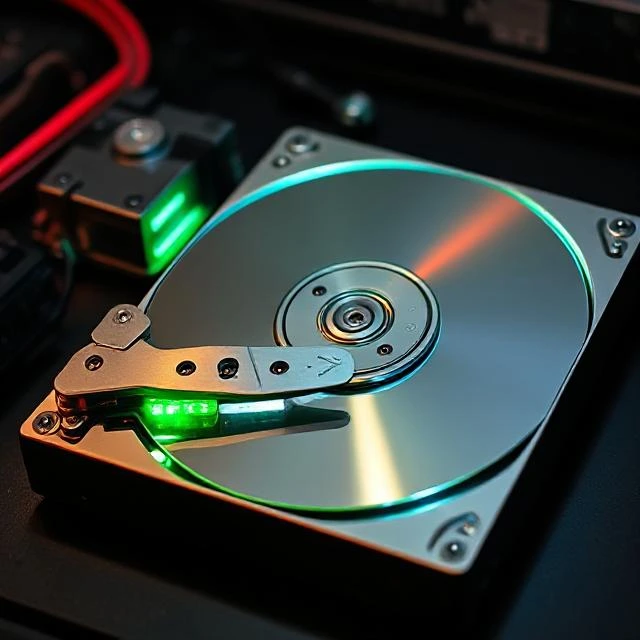 According to PrimeArray, In ten years, we have gone from 2TB HDDs, using 5 platters, to cramming 2TB onto just a single platter.
Some say it’s magic–we say it’s innovation. Here’s a look inside the magician’s hat at 18TB and 20TB HDDs.
According to PrimeArray, In ten years, we have gone from 2TB HDDs, using 5 platters, to cramming 2TB onto just a single platter.
Some say it’s magic–we say it’s innovation. Here’s a look inside the magician’s hat at 18TB and 20TB HDDs.
Ten years ago, the biggest hard drive you could purchase was a 2TB beast that contained five spinning disks and ten heads. At the time, it was incredible that we could pack that much into a tight, one-inch-tall casing. Over time, our leading five-platter design became an industry standard for data center storage.
Today, the world of storage is undergoing dizzying and exciting changes. Flash has opened up a new world of fast-paced personal computing, mobile smart devices, real-time insights, and next-generation gaming. But at the same time, the explosion of data means that both consumers and businesses are moving data and applications from devices, machines, sensors, and laptop.
Hard disk drive storage capacity
Some of the most common storage drive capacities include the following:
16 GB, 32 GB and 64 GB. This range is among the lowest for HDD storage space and is typically found in older and smaller devices.
120 GB and 256 GB. This range is generally considered an entry point for HDD devices such as laptops or computers.
500 GB, 1 TB and 2 TB. Around 500 GB and above of HDD storage is typically considered decent for an average user. Users can most likely store all their music, photos, videos, and other files with this much space. Individuals with games that take up a lot of space should find 1 TB to 2 TB of HDD space suitable.
More than 2 TB. Anything over 2 TB of HDD space is suitable for users who work with high-resolution files, who need to store or house a large amount of data, or who want to use that space for backup and redundancy.
Currently, the highest capacity HDD is 20 TB. However, an HDD actually has less space than advertised, as the operating system, file system structures and some data redundancy procedures use a portion of that space.
HDDs vs. SSDs - The main alternative to hard disk drives are solid-state drives.
Unlike hard disks, SSDs contain no moving parts. SSDs also have lower latency than HDDs, and therefore are often favored to store critical data that needs to be accessed quickly and for applications with a high input/output demand...
It is because of these benefits, and that HDDs are more vulnerable to breakdowns, that HDDs are now starting to be replaced by SSDs.
However, even though most PC users have started to favor SSDs, HDDs -- along with magnetic tape -- are still used frequently to store large amounts of data. In part, this is because SSDs are more expensive than HDDs from a price-per-gigabyte standpoint...
It’s sometimes hard to imagine our world before data was interminably at our fingertips... Over time, our leading five-platter design became an industry standard for data center storage.
For general-purpose applications, we are now shipping our 18TB Ultrastar DC HC550. It now contains 9-disks which is one more than our last generation 14TB. That equates to 2TB per disk! We have gone from 2TB on 5-disks, to 2TB on a single disk.
Helium: Enables more Disks - The benefits of helium in hard drives were recognized for years, but Western Digital was the first to figure out how to keep helium sealed inside a mass-produced drive...
As helium is 1/7th the density of air, a drive filled with helium will experience reduced turbulence inside the drive, which further allows the use of thinner platters...
Triple Stage Actuator: Enables more Tracks Per Inch (TPI) - Reducing turbulence with helium not only enables more disks per drive but also allows us to put more data tracks on each platter...
The triple-stage actuator arm is like your arm. With a pivot point at the elbow and the wrist... The old dual-stage actuator design just didn’t provide the precision needed for achieving higher track density.
Energy Assisted Magnetic Recording (EAMR) technology: Enables more Bits Per Inch (BPI)...
Greater BPI is achieved by using the first commercial implementation of EAMR technology. Energy-enhanced PMR (ePMR) provides a bias current that is applied to the recording head to improve writability...





















































































.webp)
















